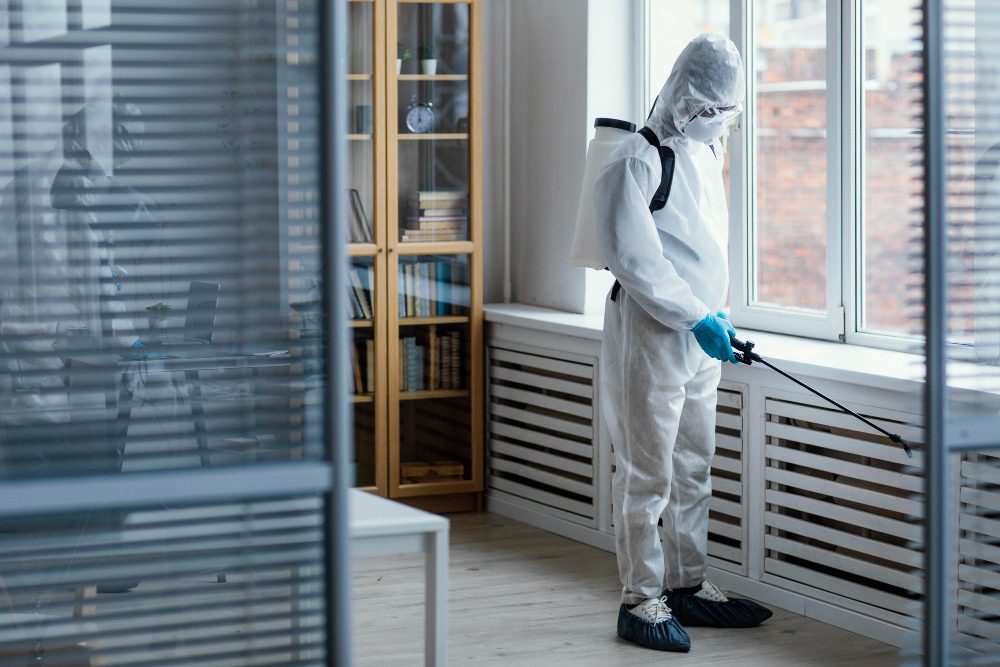As the speed of the Omicron-driven 3rd wave is slowed down, businesses like you are looking forward to reopening and returning to work. With reopening plans afoot, workplace health and safety top the list of key priorities of the executives. This is a detailed COVID-19 Safe Workplaces Checklist that will answer critical questions that decision-makers may have in respect to compliance with COVID-19 norms at the office. The checklist has been prepared based on advisory and solutions provided by our organisation to our clientele.
After completing the checklist, you should be able to:
- Review your workplace preparedness plan
- Develop an action plan that lists each item, who is responsible, what needs to be done, and by when. 3
- Develop a communication plan to inform employees, customers, and vendors taken by the organisation to protect employees from exposure to the virus.
Workplace Risk Assessment
- Conduct a COVID-19 risk assessment for your office
- Involve employees, facility managers, or facility management agencies in the risk assessment
- Establish a process for continuing risk assessment as guidance changes
- Prepare an action plan based on the results from the COVID-19 risk assessment and implement
- Review the effectiveness of the measures implemented in reducing the risk
- Seek employee feedback on the effectiveness of these measures
- Revise the action plan as per the feedback
Workplace Cleaning & Sanitisation
- Nominate a team dedicated to infection control
- Assess cleaning and sanitisation requirements of your workplace
- Maintain appropriate stock of cleaning and sanitisation supplies and an ongoing supply
- Plan for regular deep cleans of building, equipment, and surfaces
- Improve ventilation and air circulation within the work floors
- Develop SOPs for the general and equipment specific cleaning procedures
- Train your housekeeping/cleaning staff on the procedures for proper cleaning and sanitising
- Identify areas for improvement to cleanliness such as reduced door handle contact, less shared equipment, or clear workspaces. Install cleaning stations nearby such areas.
- Ensure that equipment and seats in conference rooms and cafeteria are cleaned and sanitised before a change of personnel
- Put appropriate signage to reinforce good hygiene and sanitisation practice
Engineering Controls:
- Encourage electronic payment methods and electronically signed and exchanged documents to eliminate contact during payments and exchange of documentation
- Adjust the heating ventilation and air conditioning (HVAC) system so that it maximises ventilation (dilution of air)
- Maximise the use of technology to minimise face to face interactions
- Replace push bars and handles with automatic doors or separate entrance and exit for meeting security and fire safety requirements
- Develop procedures for early identification, isolation, and transportation of people to healthcare facilities who are suspected or known to have COVID-19
- Allocate a dedicated entry and exit route for customers, visitors, and vendors, minimising contact with the workforce
- Assign separate workstations to employees to avoid shared workstations or reconfigured seating and tables to optimise spacing and reduce face to face situations
Risk Mitigation & Workplace Management:
- Introduce basic checks before permitting entry i.e. thermal screening, COVID self-test
- Stagger arrival and departure times at work to reduce crowding on routes to and from the workplace
- Reduce queues, for example by having more entry points to the workplace
- Provide hand sanitation at entry/exit points and reduce the usage of touch-based devices such as biometric fingerprint attendance system
- Restrict the use of conference rooms. Put up signs at the entrances to lifts and meeting rooms. If need be, ensure that they are shared by the fewest possible number of people.
- Encourage the use of remote working tools to avoid large numbers in meetings
- Put posters around the workplace on maintaining social distancing
- Allocate COVID-19 safety volunteers for each floor to be responsible for reinforcing the requirement to maintain social distancing
- Stagger break times to reduce pressure on the break rooms or canteens
- Provide protective safety gear for staff in the reception or guard rooms
- Opt for pre-packaged meals or similar to avoid opening canteens
- Maintain an audit trail of all visitors, including contact details of all visitors in case there’s a case on site.
- Introduce the site use manual to explain the guidelines to be followed by visitors on or before arrival
- Provide regular training to staff for hosting visitors on the premises
- Ensure sufficient stock of the standard of PPE required and an ongoing supply route in place
- Conduct regular audits to ensure 100% compliance with COVID-safety guidelines at the workplace
- Install physical barriers in each of your workspaces to maintain social distancing
- Use floor markings for social distancing and introduce one-way flow at entry and exit points
- Revise maximum occupancy for lifts and ways of operating lifts




